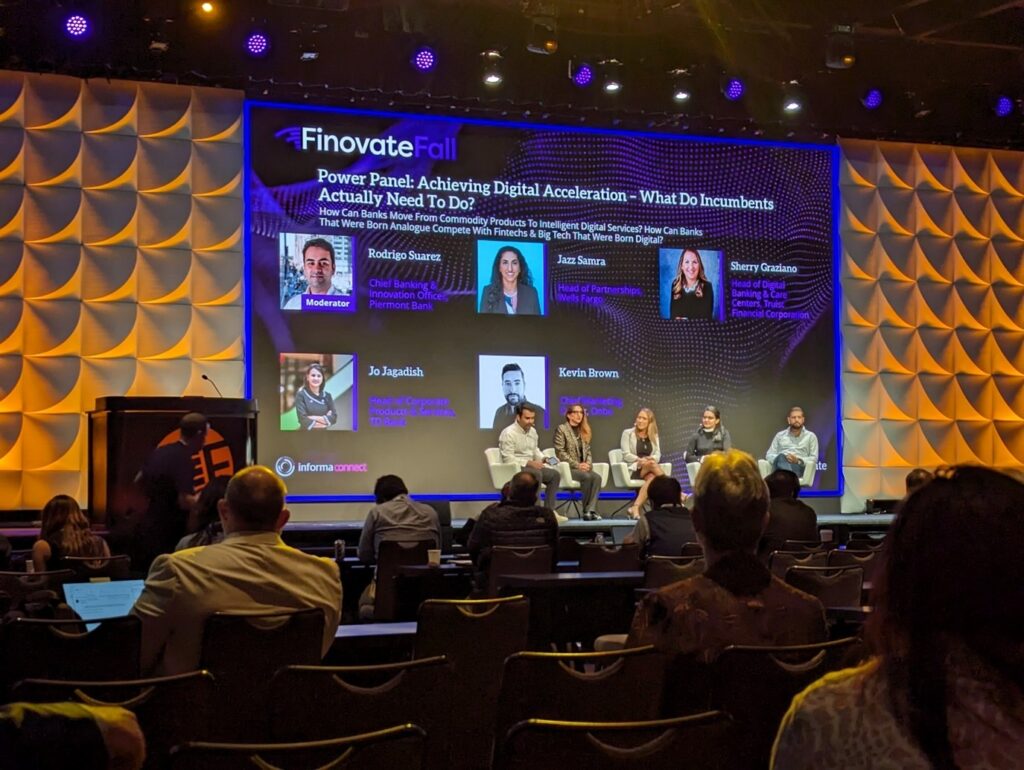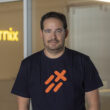FinovateFall 2023: How can incumbent banks keep up in a rapidly evolving tech landscape?
With new technological breakthroughs and use cases cropping up almost every day, ever-changing customer demands when it comes to their banking experience, and a wealth of new digital-first players entering the market, ensuring agility and adaptability when it comes to digital strategies and transformation has never been more important for incumbent banks.

Fintech and banking experts from across the US are in attendance at FinovateFall 2023 in New York
But with challenges such as legacy systems and legacy thinking, siloed teams, and potential resistance from existing employees to change, how can incumbent players keep up with the pace of change?
This year’s FinovateFall conference in New York aimed to answer this question, featuring a panel of four banking and fintech experts providing their insights and tips for big banks to achieve digital acceleration.
Overcoming legacy hurdles
Prior to the panel, Finovate host Greg Palmer ran a live poll with the audience, asking what the biggest challenge was for incumbents when it comes to digital transformation projects. Topping the poll with an overwhelming 85% of the votes was overcoming legacy systems and thinking.
On tackling this issue, Jo Jagadish, head of corporate products and services at TD Bank, says there’s “no one right answer or one single way to get there”, but details how TD has looked to approach the issue.
Jagadish says: “Largely we think about modernising our tech stack with two core principles. One is creating a resilient, flexible kind of middleware layer that can extract some of the complexity that sits behind some of the larger mainframes and legacy systems where I think there are like five developers in the world who know how to code to that platform, and everything else needs to be done a little bit more simplistically.
“So we are working on creating more resilient orchestration layers that really hide that complexity from some of the back-end systems that are more legacy in nature, and then building more plug-and-play type capabilities on the front-end and then also stitching together a user experience that happens smoothly so they don’t see the complexity that sits in the background.
“And then I’d say there’s some more choices that you have to make which are multi-million dollar investments to really replace some legacy technology and you cannot shy away from that either.
“So I’d say a combination of both abstracting the complexity through a services-based architecture, creating integrated, data-rich, personalised experiences on the frontend that make it a lot more seamless for the client, and then making those tough big decisions around investments where you need to replace some of that legacy architecture are the two key things.”
Services over products
Jazz Samra, head of partnerships at Wells Fargo, adds that a mindset shift may be necessary for incumbents to focus on services more than just products to ensure they can evolve to meet customer needs.
“It’s a massive focus for us internally,” says Samra. “If you think about it, we’re a 170-year-old firm. It’s a mindset shift from product delivery, making lots of different products, to channels. So we’re really trying to understand what problems our customers are trying to solve and how we can deliver that new digital way.”
Sherry Graziano, head of digital and care centre banking at Truist Financial Corporation (the result of a merger between BB&T and SunTrust in late 2019 and now the sixth largest bank in the US by assets), adds that journey orchestration is now essential for incumbents.
“It’s no longer about, ‘hey, let’s just focus on product, product, product’, it’s really about thinking through journey orchestration to allow that client to be met with where and how they so desire,” Graziano says.
Fintech partnerships and build vs buy
Partnering with fintech companies has also become a key outlet for large banks looking to launch value-adding services quickly to meet shifting customer needs.
On the topic of partnering with fintechs versus building offerings in-house, Samra says a healthy combination of both is often best for business.
“Within Wells Fargo, there’s deep knowledge about building and a history of that, but there’s also this notion that we can’t build our way through everything,” Samra says.
“So, if we want to get to market faster, we want to look at what users need and we want to think about the capabilities and the features that are available, and fintechs have done a really good job at creating these new experiences, and so we look at that very much as a partnership. We look at what our customers need and what capabilities are out there and then we’ll target organisations in that field of work.
“There’s an opportunity to leverage that data and those unique experiences that fintechs can build and then to scale. We think it’s a really interesting opportunity to partner and that’s where we spend a lot of our time, evaluating those partnerships.”
TD Bank’s Jagadish adds: “Deciding on when does it make sense to partner versus to build really lies in a couple of key factors.
“One is, is that capability or feature or function, whatever you want to call it, is it really core to your business model? And if it’s really core to the business model of the bank, I do think the investment to build makes a lot of sense.
“And then there are scenarios where we decide to partner because it may never be the bank’s core confidence.”
To conclude, speaking from the fintech perspective on bank partnerships, Kevin Brown, CMO of Onbe (a provider of disbursement solutions to corporates), points to three key things company’s need to think about.
Brown says: “The onus is on the fintechs to say, number one, do you understand those pain points? Number two, do you have the ability to integrate with the banks in a way that’s acceptable?
“So really understanding and meeting clients where they are in terms of their banking programmes, where they’re at with their consumers, with their technology. And then, of course, like any good business, understanding what success looks like for the partnership and where do we want to get to shortly, and then where do we go from there.”










































